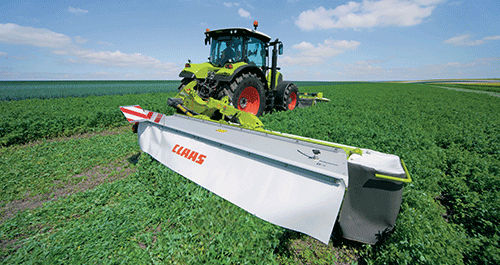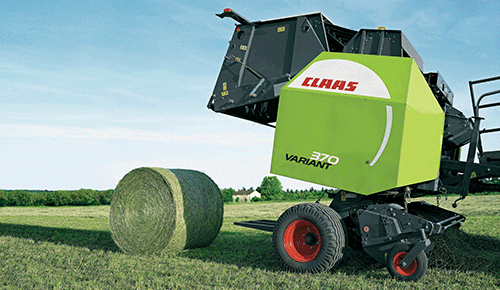
In terms of efficiency and effectiveness, few tasks on a farm match preventive maintenance of machinery. Dedicating time to preventing damage can keep all components of a job in working order; as harvest season looms for hay and forage growers, these preventive maintenance steps can provide optimized use of time in the field.

Oil and lubrication points should be addressed regularly. The gear box oil is especially important to change, as deterioration can lead to damaged seals. While changing the oil before harvest season every year is important, operators should also check with the owner's manual for more specific information. Typically, these oil changes will be determined by hours of operation.
Depending on the baler or mower, the hourly operation intervals between changes may vary; the oil can breakdown at different rates and cause more severe damage if the recommended intervals are not adhered to.
Venting the friction clutch annually and greasing all points on each machine including U-joints, the cutterbar and PTO shaft are also frequent checkpoints to monitor. In the mower, be sure to check the disk for wear. If the disk is always kept in the same position, as it rotates it will only wear on one side. In order to increase longevity of the mower, the position of the disk should be altered to disperse any machine wear that could otherwise build up on a concentrated area. The mower cutterbar should also be closely examined for a unique condition that can occur in dry climates. With worries about the U.S. drought prolonging or worsening, much of the forages harvested this year could come from extremely dry fields.
Alfalfa coming from these rain-deprived areas could be particularly problematic and will require special attention. When harvested, this alfalfa can contain more sap in the stems and that can drip down and form a hard, concrete-like substance on the cutterbar. If a mower sits even for just a few hours, the disk can lock in place and burn out the clutch.
To prevent this, operators should check the cutterbar for any sap accumulation and scrape it clean before firing up the machine; if the sap is too thick, spraying the cutterbar with water can loosen the buildup and more easily allow for removal.
For balers, be sure to properly match the machine to the crop. Crops such as cornstalks and silage can be much harder on a baler than grasses, and specifically designed balers should be incorporated for those jobs. Using a generic baler is not as effective and can damage the inside of the machine.

The tedder, which is primarily used to spread out the cut forage and hasten drying time, also features a number of areas to investigate during the preventive maintenance stage. Much like the baler and mower conditioner, the tedder should be properly lubricated. Well-maintained tines are also imperative in the success of a tedder; tine lengths are designed to spread the crop with minimal damage to the plant and broken or malfunctioning tines can impede this process.
With the number of variables to consider in the harvest process, aspects that can be controlled are at a premium. By carefully preparing and inspecting the forage harvest implement line, operators can make the most of the narrow window of time available for harvest.
4.15.2013